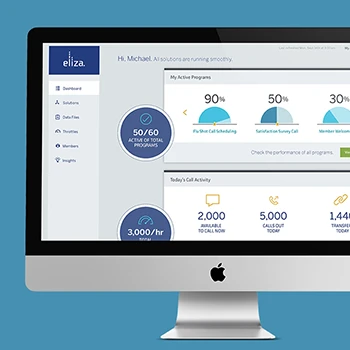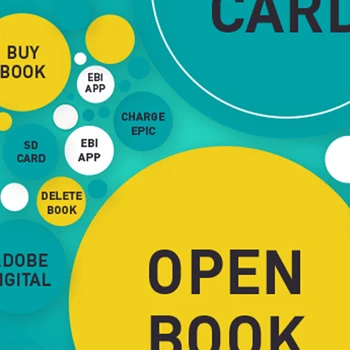What exactly is product UX strategy and why do we need it beyond just design?
Product UX strategy defines the vision and mission for your product experience, connecting user needs to business goals through a structured approach. While design focuses on how things look and work, strategy determines what to build and why. Our Experience Thinking framework ensures strategy spans brand perception, content effectiveness, product usability, and service delivery rather than just interface design. Strategy prevents building features nobody wants and helps prioritize development resources toward maximum user and business impact.
Tip: Establish your product vision and mission before detailed design work begins - this foundation guides all subsequent UX decisions and prevents scope creep.
How does product UX strategy differ from product management or business strategy?
Product UX strategy bridges user experience goals with business objectives, focusing specifically on how user needs translate into product requirements and experience design. While product management handles roadmaps and feature prioritization, UX strategy defines the experience vision that guides those decisions. Business strategy sets market positioning; UX strategy determines how users will experience that positioning through your product. The intersection of these strategies creates products that succeed both commercially and experientially.
Tip: Involve both product management and business strategy stakeholders in UX strategy development to ensure alignment across all strategic dimensions.
When in the product development lifecycle should we engage in UX strategy work?
UX strategy provides maximum value during early product conceptualization, before significant development investment begins. Following the Experience Thinking approach, strategy work should happen in the innovation and early strategy phases - after initial opportunity discovery but before detailed design and development. However, existing products benefit from strategy work before major redesigns or new feature development. The key is having strategy inform decisions rather than retrofitting strategy around already-made choices.
Tip: Schedule strategy work during natural product planning cycles rather than trying to insert it into active development sprints where it may feel disruptive.
What's the difference between having a UX strategy and following UX best practices?
UX best practices provide tactical guidelines for interface design and usability, while UX strategy provides strategic direction for product experience goals and user value creation. Best practices might tell you how to design a button; strategy tells you whether that feature should exist and why. Strategy also connects UX decisions to business outcomes and competitive positioning. Many organizations follow best practices without strategy and wonder why their products feel generic or fail to differentiate in the market.
Tip: Use best practices for execution details but rely on strategy to guide major product experience decisions and feature prioritization.
How do you approach product strategy for complex enterprise software versus consumer products?
Enterprise product strategy requires understanding complex user hierarchies, organizational buying processes, and integration requirements alongside individual user needs. Consumer product strategy focuses more on individual user motivations, market positioning, and acquisition/retention dynamics. Both benefit from the Experience Thinking framework, but enterprise products need additional attention to service experience design for implementation, training, and ongoing support. The strategy process adapts to accommodate longer sales cycles and multiple stakeholder perspectives in enterprise contexts.
Tip: For enterprise products, include buyer personas alongside user personas in strategy development - the people who purchase often differ from those who use the product daily.
What role does competitive analysis play in product UX strategy development?
Competitive analysis reveals market positioning opportunities and user expectation baselines that inform strategic differentiation. We examine not just competitor features but their experience strategies, user onboarding approaches, and positioning in the market landscape. This analysis helps identify white space opportunities where user needs aren't well served and areas where differentiation would create competitive advantage. The goal isn't copying competitors but understanding the competitive experience landscape to make informed strategic choices.
Tip: Analyze competitor user experiences rather than just feature lists - understanding their experience strategy often reveals more strategic insights than cataloging capabilities.
How does foresight design thinking influence product UX strategy?
Foresight design anticipates future user behaviors, technology trends, and market conditions rather than just responding to current needs. In product strategy, this means examining emerging user expectations, evolving interaction patterns, and technological capabilities that will shape product experiences. We investigate signals of change in user behavior, competitive landscape shifts, and emerging technologies that could impact your product strategy. This forward-looking approach helps create strategies that remain relevant as markets evolve rather than quickly becoming outdated.
Tip: Include future scenario planning in strategy development - consider how your product strategy would adapt to different potential market and technology changes.
What does your product UX strategy development process typically include?
Our process follows the Experience Thinking framework through innovation, strategy, design, and validation phases. Innovation phase includes opportunity discovery and idea exploration. Strategy phase covers user research, competitive analysis, stakeholder interviews, and experience lifecycle mapping. Design phase creates user stories, experience journeys, and interaction architecture. Throughout, we maintain focus on connecting brand perception, content effectiveness, product usability, and service delivery for holistic experience strategy.
Tip: Participate actively in stakeholder interviews and user research sessions - your domain knowledge combined with our UX expertise often reveals the most valuable strategic insights.
How do you balance user needs with business constraints and technical limitations in strategy?
Effective product strategy requires understanding all three constraint types and finding solutions that optimize across them rather than sacrificing one for others. We conduct stakeholder analysis to capture business requirements, technical assessments to understand feasibility, and user research to identify genuine needs versus nice-to-haves. The Experience Thinking approach helps us examine multiple solution pathways that might achieve user goals while respecting business and technical realities. Strategy becomes about creative problem-solving within constraints rather than ignoring them.
Tip: Include technical stakeholders early in strategy development - their insights about feasibility often reveal creative solution opportunities that pure business or user perspectives miss.
What research methods do you use to inform product strategy decisions?
Strategy research combines user interviews, ethnographic observation, task analysis, journey mapping, and competitive analysis adapted to strategic rather than tactical questions. We investigate user motivations, mental models, and workflow integration rather than just usability feedback. Market research examines positioning opportunities and user adoption patterns. The research focuses on understanding user goals, business contexts, and strategic opportunities rather than interface preferences. Mixed methods provide both qualitative insights and quantitative validation.
Tip: Frame research around strategic decisions you need to make rather than general user feedback - this focus produces more actionable strategic insights.
How do you approach strategy for products that serve multiple user types or personas?
Multi-persona products require strategy that identifies primary and secondary user prioritization while finding experience design approaches that serve all users effectively. We map user segment needs, usage patterns, and business value to identify strategic focus areas. The Experience Thinking lifecycle approach helps us understand how different personas interact with your product across different phases and touchpoints. Strategy might involve tiered experiences, role-based functionality, or workflow customization that accommodates diverse user needs.
Tip: Prioritize personas based on business impact and user volume rather than trying to serve all personas equally - this focus enables stronger strategic decisions.
How do you translate strategy insights into actionable product roadmaps and development priorities?
Strategy translation involves creating user stories, experience requirements, and success metrics that connect strategic vision to implementation details. We prioritize features based on user impact, business value, and implementation complexity to create realistic development sequences. The roadmap connects immediate development tasks to longer-term strategic goals, showing how current work builds toward the strategic vision. Experience journeys and interaction architecture provide frameworks for organizing development priorities around user value creation.
Tip: Create roadmap milestones that deliver complete user value rather than just feature completions - this approach maintains strategic focus during development.
What deliverables do we receive from product UX strategy engagements?
Strategy deliverables include experience vision and mission statements, user personas and journey maps, competitive positioning analysis, feature prioritization frameworks, success metrics definition, and implementation roadmaps. Documentation focuses on actionable insights rather than academic analysis. Visual artifacts like experience lifecycle maps and interaction architecture diagrams help communicate strategy to development stakeholders. All deliverables connect to business goals and provide guidance for ongoing product decisions.
Tip: Specify which deliverables your internal stakeholders need for their decision-making processes - customized outputs often provide more practical value than standard strategy documents.
How do you handle strategy for products in regulated industries with compliance requirements?
Regulated industry strategy requires balancing user experience goals with compliance obligations and risk management concerns. We research regulatory requirements early in strategy development and identify creative approaches that achieve compliance while maintaining good user experiences. Strategy often involves finding user-friendly ways to handle required disclosures, consent processes, and security measures. The service experience component of our framework particularly addresses compliance training and support needs that regulated products require.
Tip: Involve compliance stakeholders in strategy development rather than treating compliance as a constraint imposed after strategy creation - collaborative approaches often find better solutions.
How does product UX strategy connect to overall business strategy and market positioning?
Product UX strategy translates business positioning into user experience decisions and helps differentiate your product through experience design rather than just features. We examine how your business strategy and value proposition can be expressed through user interactions, content presentation, and service delivery. The Experience Thinking brand component ensures UX strategy reinforces rather than conflicts with business positioning. Strategy becomes a bridge between high-level business goals and specific product experience decisions.
Tip: Include business strategy stakeholders in UX strategy development to ensure alignment and avoid creating user experiences that conflict with business positioning.
What's the business case for investing in product UX strategy versus jumping directly into design and development?
Strategy investment prevents expensive development mistakes by validating direction before major resource commitment. Poor strategy leads to feature bloat, user confusion, competitive disadvantage, and expensive redesigns after launch. Strategy clarifies what not to build as much as what to build, focusing development resources on highest-impact opportunities. Organizations with clear UX strategy typically see faster development cycles, higher user satisfaction, and stronger competitive positioning than those building without strategic direction.
Tip: Calculate the cost of building wrong features or redesigning after launch - strategy investment typically costs far less than correcting strategic mistakes later.
How do you measure the success and ROI of product UX strategy initiatives?
Strategy success measurement includes both leading indicators like user engagement and task completion rates, and lagging indicators like revenue impact and market share changes. We establish baseline metrics before strategy implementation and track improvement over time. Success metrics connect to business goals - whether that's user acquisition, retention, conversion rates, or customer lifetime value. The measurement framework helps demonstrate strategy value and guide ongoing strategic refinements based on market response.
Tip: Establish success metrics during strategy development rather than after implementation - this ensures strategy focuses on measurable business outcomes from the beginning.
Can product UX strategy help us identify new market opportunities or product extensions?
Strategic user research often reveals unmet needs and usage patterns that suggest market expansion opportunities. Through Experience Thinking lifecycle analysis, we identify gaps in user journeys that could be filled by additional products or services. Understanding user workflows and pain points beyond your current product scope reveals adjacent market opportunities. Strategy work frequently uncovers user needs that could be addressed through product extensions, partnerships, or entirely new offerings.
Tip: Document user needs that fall outside your current product scope during strategy development - these insights often reveal future product opportunities worth investigating.
How does product strategy account for different market segments or geographic regions?
Multi-market strategy requires understanding cultural differences, regulatory variations, and user behavior patterns across markets while maintaining brand consistency. We research local user expectations, competitive landscapes, and market maturity levels to inform strategy adaptation. The Experience Thinking framework helps identify which experience elements require local customization and which can remain consistent globally. Strategy balances efficiency of shared approaches with effectiveness of local adaptation.
Tip: Start with one market for initial strategy development, then adapt systematically to other markets rather than trying to accommodate all markets simultaneously in initial strategy.
What's your approach to product strategy for startups versus established organizations?
Startup strategy focuses on market validation, user acquisition, and rapid learning cycles with limited resources. Established organization strategy addresses technical debt, user expectation evolution, and competitive positioning in mature markets. Startups need flexible strategy that can pivot based on market feedback; established organizations need strategy that manages change without disrupting existing user relationships. Both benefit from Experience Thinking, but implementation timelines and risk tolerance differ significantly.
Tip: For startups, build learning and validation checkpoints into strategy implementation - be prepared to adjust strategy based on early user feedback and market response.
How do you help organizations build internal capability for ongoing product strategy management?
Strategy capability building involves methodology transfer, stakeholder training, and framework establishment that enables ongoing strategic decision-making. We provide strategy templates, decision-making frameworks, and success measurement tools that internal groups can use independently. Training covers strategic thinking approaches, user research integration, and competitive analysis methods. The goal is creating organizational capability for continuous strategic thinking rather than dependence on external strategy development.
Tip: Participate actively in strategy development sessions to learn methodology alongside receiving strategic outputs - this builds internal capability for future strategy work.
How does product UX strategy support innovation and new feature development?
Innovation strategy creates frameworks for evaluating new ideas against user value and business goals rather than just technical feasibility. Following the Experience Thinking innovation phase, we help identify opportunity spaces where innovation could create user value and competitive advantage. Strategy provides criteria for prioritizing innovation investments and guidelines for testing new concepts with users. Innovation becomes strategic rather than random, focusing creative energy on areas most likely to generate meaningful user and business impact.
Tip: Create innovation criteria based on your user research and strategic goals rather than pursuing innovations just because they're technically interesting or trendy.
What role does emerging technology play in product UX strategy development?
Emerging technology assessment focuses on user value potential rather than just technical capabilities. We examine how new technologies could enhance user experiences, solve existing user problems, or enable entirely new user workflows. Foresight design thinking helps us anticipate how technology adoption might change user expectations and competitive landscapes. Strategy includes technology evaluation frameworks that balance innovation opportunities with implementation risk and user readiness for new interaction paradigms.
Tip: Evaluate emerging technologies based on user problem-solving potential rather than technological novelty - focus on technologies that genuinely improve user experiences.
How do you approach strategy for AI-powered products and intelligent user experiences?
AI product strategy requires understanding user mental models of intelligent behavior, trust building, and the balance between automation and user control. We research user comfort levels with AI decision-making, preferences for transparency in automated processes, and expectations for AI assistance versus human intervention. Strategy addresses how AI enhances rather than replaces human capabilities and creates appropriate feedback mechanisms for AI-driven features. User research reveals where AI adds genuine value versus where it creates confusion or concern.
Tip: Test user understanding and acceptance of AI features early in strategy development - user misconceptions about AI capabilities often create adoption barriers that design alone cannot solve.
Can product strategy help us transition from current product architectures to more modern approaches?
Modernization strategy balances user experience improvements with technical architecture evolution and business continuity needs. We create migration strategies that improve user experiences incrementally while supporting necessary technical changes. Understanding user workflows and pain points helps prioritize which modernization efforts will have the most user impact. Strategy includes change management approaches that maintain user satisfaction during transitions while positioning for future capabilities.
Tip: Focus modernization efforts on areas where technical improvements will create visible user experience benefits rather than purely internal technical upgrades.
How does foresight design inform innovation strategy for future user needs?
Foresight design examines emerging user behavior patterns, evolving expectations, and societal trends that will shape future product requirements. We investigate early adopter behaviors, generational differences in technology adoption, and signals of changing user preferences to inform innovation direction. This future-oriented approach helps create innovation strategies that anticipate user needs rather than just responding to current problems. Strategy includes scenario planning for different potential futures and adaptive frameworks for changing market conditions.
Tip: Balance future-oriented innovation with current user needs - ensure innovation strategy addresses both immediate user value and longer-term market evolution.
What's your approach to strategy for platform products that enable third-party development?
Platform strategy requires understanding both end-user needs and developer experience requirements, creating successful ecosystems that serve multiple stakeholder types. We research platform adoption patterns, developer community needs, and user expectations for platform-enabled experiences. Strategy addresses API design philosophy, developer tools requirements, and governance frameworks that balance control with flexibility. The service experience component particularly focuses on developer onboarding, documentation, and ongoing support that enables platform success.
Tip: Include developer personas alongside user personas in platform strategy development - platform success depends on creating good experiences for both developers and end users.
How do you handle strategy for products that integrate with existing user workflows and technology ecosystems?
Integration strategy requires understanding user workflow contexts, existing tool relationships, and change management challenges alongside product-specific needs. We research user mental models of workflow integration, data sharing expectations, and switching costs between tools. Strategy addresses how your product fits into broader user ecosystems rather than assuming it will be used in isolation. Experience lifecycle mapping includes integration touchpoints and workflow transition moments that impact user adoption and satisfaction.
Tip: Map user workflows beyond your product boundaries to understand integration requirements and identify opportunities to simplify user tool management.
What type of user research informs product strategy versus tactical design decisions?
Strategic user research focuses on understanding user goals, motivations, workflow contexts, and decision-making processes rather than interface preferences or usability issues. We investigate user mental models, value perceptions, and behavioral patterns that inform product direction and feature prioritization. Research questions address why users behave as they do and what drives their product choices rather than how they react to specific design elements. Strategic research provides foundation for product decisions; tactical research optimizes implementation details.
Tip: Frame strategic research around business decisions you need to make rather than design validation - this produces insights that inform product direction rather than just interface improvements.
How do you research user needs for products that don't exist yet or represent new market categories?
Future product research examines current user pain points, workflow inefficiencies, and unmet needs that could be addressed by new solutions. We investigate user workarounds, tool switching patterns, and expressed frustrations with existing approaches. Research includes concept testing with prototypes, scenario evaluation, and competitive analysis of adjacent solutions users currently employ. The goal is understanding user problems worth solving rather than validating specific solution approaches.
Tip: Focus research on understanding user problems and contexts rather than testing specific product concepts - deep problem understanding often reveals multiple solution opportunities.
What's your approach to researching enterprise users versus consumer users for product strategy?
Enterprise user research requires understanding organizational contexts, approval processes, and workflow integration alongside individual user needs. We research both individual user goals and organizational success metrics that influence product adoption decisions. Enterprise research often involves multiple stakeholder interviews, workflow observation, and understanding change management concerns. Consumer research focuses more on individual motivations, lifestyle integration, and personal value perception. Both inform strategy but through different research approaches and stakeholder considerations.
Tip: For enterprise products, research organizational buying and implementation processes alongside individual user needs - product success depends on both user satisfaction and organizational adoption.
How do you validate strategic assumptions about user behavior and market opportunities?
Strategic validation combines qualitative user research with quantitative market analysis and prototype testing to validate key assumptions before major investment. We identify critical assumptions underlying strategy recommendations and design specific validation approaches for each assumption type. Validation might include user interviews, concept testing, competitive analysis, or market surveys depending on the assumption being tested. The goal is reducing strategic risk through evidence gathering rather than proceeding on untested beliefs.
Tip: Identify your most critical strategic assumptions explicitly and prioritize validation efforts on assumptions that would most impact strategy if proven wrong.
Can user research reveal insights that change fundamental product strategy direction?
Strategic user research frequently reveals insights that challenge initial assumptions about user needs, market opportunities, or competitive positioning. Users often have different mental models, priorities, or workflows than internal stakeholders expect. Research might reveal that user problems are different than assumed, that current solutions are more or less satisfactory than expected, or that market opportunities exist in unexpected areas. Good strategic research remains open to findings that require strategy adjustments.
Tip: Approach strategic research with genuine curiosity rather than seeking validation of existing beliefs - the most valuable insights often challenge initial assumptions.
How do you research user expectations for emerging interaction modalities like voice, gesture, or AR/VR?
Emerging interface research examines user mental models for new interaction paradigms, comfort levels with different input methods, and expectations for system capabilities and limitations. We investigate current user behaviors with similar technologies, adoption barriers, and use case scenarios where new modalities would provide value. Research includes prototype testing, scenario evaluation, and understanding user learning curves for new interaction approaches. Foresight design thinking helps anticipate how user expectations might evolve as technologies mature.
Tip: Research user mental models and expectations for emerging technologies rather than just testing specific implementations - understanding user conceptual frameworks enables better strategic decisions.
What role does longitudinal research play in understanding user needs evolution over time?
Longitudinal research reveals how user needs, behaviors, and expectations change as they gain experience with products and as market conditions evolve. We track user journey evolution, feature adoption patterns, and changing pain points to understand how product strategy should adapt over time. Long-term research helps distinguish between initial adoption challenges and fundamental usability issues. Understanding user evolution informs strategy for onboarding, feature discovery, and advanced user needs that emerge through continued usage.
Tip: Plan for follow-up research cycles during strategy development to track how user needs evolve rather than assuming initial research insights remain static over time.
How do you ensure product strategy translates into successful implementation rather than remaining theoretical?
Implementation success requires connecting strategy insights to specific development tasks, success metrics, and stakeholder accountability. We create implementation roadmaps that break strategic vision into achievable milestones with clear success criteria. Strategy documentation includes specific user stories, acceptance criteria, and design principles that guide development decisions. Regular check-ins during implementation help maintain strategic alignment and adapt to unexpected challenges while preserving strategic intent.
Tip: Assign specific stakeholders to own different aspects of strategy implementation rather than assuming strategy will implement itself through documentation alone.
What ongoing support do you provide during strategy implementation and product development?
Implementation support includes design review sessions, strategic decision guidance, user research validation, and adaptation coaching as market conditions change. We help translate strategy into design specifications, evaluate feature proposals against strategic criteria, and provide guidance when implementation challenges require strategic adjustments. Support can include stakeholder training, framework development, and periodic strategy reviews to ensure continued alignment with strategic vision throughout development cycles.
Tip: Schedule regular strategy check-ins during development rather than only engaging strategy consultation when problems arise - proactive guidance prevents strategic drift during implementation.
How do you handle strategy adjustments when user feedback conflicts with initial strategic assumptions?
Strategy flexibility allows for adaptation based on market learning while maintaining core user value propositions and business goals. We distinguish between tactical adjustments that improve implementation and strategic pivots that require fundamental direction changes. User feedback evaluation examines whether feedback represents implementation issues, user education needs, or genuine strategic misalignment. Adaptation frameworks help organizations respond to new information without abandoning strategic thinking or constantly changing direction.
Tip: Establish criteria for what types of user feedback should trigger strategy adjustments versus implementation improvements - this prevents overreacting to tactical feedback or ignoring strategic signals.
What's your approach to measuring strategy success and iteration over time?
Strategy measurement includes both user experience metrics and business impact indicators that connect strategy implementation to organizational goals. We establish baseline measurements before strategy implementation and track progress against strategic objectives over time. Measurement frameworks distinguish between leading indicators like user engagement and lagging indicators like revenue impact. Regular strategy reviews examine what's working, what needs adjustment, and how market changes might require strategic evolution.
Tip: Create measurement dashboards that track both user experience metrics and business outcomes - strategy success requires demonstrating impact on both user satisfaction and business performance.
How do you help organizations avoid common strategy implementation pitfalls?
Common pitfalls include strategy drift during development, stakeholder misalignment, metrics gaming, and feature creep that dilutes strategic focus. We provide frameworks for maintaining strategic alignment, stakeholder communication approaches, and decision-making criteria that preserve strategic intent. Training helps organizations recognize when implementation decisions conflict with strategic goals and provides tools for making strategic trade-offs when constraints require adaptation. Prevention focuses on building organizational capability for strategic thinking.
Tip: Document the reasoning behind strategic decisions during development to help future decision-makers understand strategic intent when making implementation trade-offs.
Can you help us build long-term product strategy capabilities within our organization?
Strategy capability building includes methodology training, framework development, and organizational change support that enables ongoing strategic thinking. We transfer strategic thinking approaches, user research integration methods, and competitive analysis frameworks that organizations can use independently. Capability building also addresses organizational culture changes needed to support user-centered strategic decision-making. The goal is creating sustainable strategic practices rather than dependence on external strategy development.
Tip: Start capability building with specific methodology training for key stakeholders rather than trying to transform entire organizational culture immediately - focused skill development often enables broader cultural change over time.
How does foresight design help ensure product strategy remains relevant as markets and technologies evolve?
Foresight design creates adaptive strategy frameworks that anticipate change rather than just responding to current conditions. We build scenario planning approaches, early warning systems for market shifts, and strategy review processes that keep strategy current with evolving user expectations and competitive landscapes. Adaptive strategy includes decision frameworks for responding to technological changes, market disruptions, and user behavior evolution while maintaining core strategic direction and user value propositions.
Tip: Create quarterly strategy review processes that examine market signals and user behavior trends rather than only reviewing strategy during major product planning cycles.
How does Experience Thinking methodology enhance traditional product strategy approaches?
Experience Thinking provides a holistic framework that connects product strategy to brand experience, content strategy, and service delivery rather than treating product in isolation. This approach ensures product strategy reinforces overall organizational experience goals and creates consistency across all user touchpoints. The framework helps identify experience gaps and opportunities that single-channel product strategy might miss. Experience lifecycle thinking ensures strategy addresses the complete user journey from awareness through advocacy rather than just product usage.
Tip: Map your current product strategy against all four Experience Thinking quadrants to identify opportunities for creating more connected and consistent user experiences.
What's your approach to product strategy for omnichannel and ecosystem experiences?
Omnichannel strategy requires understanding how users move between different channels and touchpoints while maintaining consistent experience quality and brand perception. We map cross-channel user journeys, identify experience handoff points, and develop consistency frameworks that work across different interaction modalities. Strategy addresses data integration, experience personalization, and channel-specific optimization while preserving overall experience coherence. The service experience component ensures support and implementation work across all channels.
Tip: Focus omnichannel strategy on user journey continuity rather than trying to make all channels identical - each channel should optimize for its strengths while maintaining experience consistency.
How do you approach strategy for subscription products and long-term user relationships?
Subscription product strategy focuses on experience lifecycle management that creates ongoing user value and prevents churn through deepening engagement over time. We research user onboarding experiences, feature discovery patterns, advanced user needs development, and renewal decision factors. Strategy addresses how user needs evolve through continued usage and how product experiences should adapt to maintain relevance. The approach emphasizes user success and value realization rather than just initial adoption.
Tip: Design subscription product strategy around user success metrics and lifecycle value rather than just acquisition numbers - long-term user satisfaction drives subscription business success.
Can product UX strategy help with digital transformation and legacy system modernization?
Digital transformation strategy balances user experience improvement with organizational change management and technical modernization requirements. We create transformation roadmaps that prioritize user-facing improvements while supporting necessary technical architecture changes. Strategy includes change management approaches that maintain business continuity while improving user experiences. The approach helps organizations modernize incrementally while creating visible user value and building internal support for continued transformation investment.
Tip: Focus transformation strategy on creating early user experience wins that demonstrate value while building technical foundation for larger transformation goals.
How does product strategy address accessibility and inclusive design requirements?
Inclusive product strategy ensures accessibility considerations influence product direction and feature prioritization rather than being retrofitted after development. We research diverse user needs, assistive technology usage patterns, and inclusive design opportunities that benefit all users. Strategy addresses how accessibility requirements can drive innovation and create competitive advantages rather than just compliance obligations. The approach integrates accessibility into experience lifecycle planning and business case development.
Tip: Include accessibility considerations in initial strategy development rather than treating them as constraints imposed later - inclusive design often reveals innovation opportunities that benefit all users.
What's your approach to strategy for data-driven products and analytics platforms?
Data product strategy requires understanding user mental models for data interpretation, workflow integration needs, and decision-making processes that analytics should support. We research how users currently make decisions, what information they need, and how data presentation can enhance rather than complicate their workflows. Strategy addresses data visualization philosophy, interaction design for complex information, and integration with existing decision-making processes. The approach ensures data products enable user success rather than just displaying information.
Tip: Research user decision-making processes and information needs rather than just data visualization preferences - understanding how users work with information enables better strategic decisions.
How do you handle product strategy for global products with diverse cultural and regulatory requirements?
Global product strategy balances consistency with local adaptation, understanding cultural differences in user expectations, interaction preferences, and regulatory requirements. We research local market conditions, competitive landscapes, and user behavior patterns to inform adaptation decisions. Strategy frameworks distinguish between elements requiring global consistency and those needing local customization. The approach creates scalable adaptation frameworks rather than completely separate strategies for each market.
Tip: Start with core user value propositions that work globally, then adapt interaction patterns and content presentation for local markets rather than trying to create entirely different strategies for each region.












